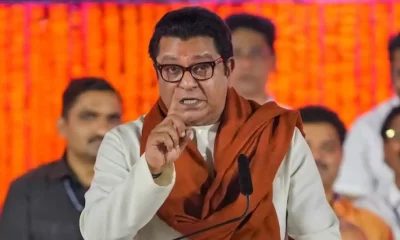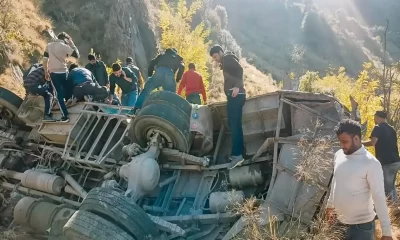Latest world news
Make-in-India: U.S Defence firms want to retain control on proprietary technology

By Aditya Kalra and Sanjeev Miglani
US-India Business Council says foreign partners in defence production can’t be held liable for defects in products manufactured in collaboration
New Delhi: U.S. defence firms offering to set up production lines in India to win deals worth billions of dollars want stronger assurances they won’t have to part with proprietary technology, according to a business lobby group’s letter to India’s defence minister.
The letter had been sent a month before Prime Minister Narendra Modi reshuffled his council of ministers and was thus addressed to Arun Jaitley who then held additional charge of the defence portfolio.
These companies are also saying they shouldn’t be held liable for defects in products manufactured in collaboration with local partners under PM Modi’s ‘Make-in-India’ drive to build a military industrial base.
Lockheed Martin and Boeing are both bidding to supply combat jets to India’s military, which is running short of hundreds of aircraft as it retires Soviet-era MiG planes, and its own three-decade-long effort to produce a domestic jet is hobbled by delays. Lockheed has offered to shift its F-16 production line to India from Fort Worth, Texas, and make it the sole factory worldwide if India orders at least 100 single-engine fighters.
The U.S. firm has picked Tata Advanced Systems as its local partner under the defence ministry’s new Strategic Partnership model under which foreign original equipment manufacturers (OEMs) can hold up to a 49 percent stake in a joint venture with an Indian private firm which will hold the majority of shares.
The US-India Business Council (USIBC) wrote to India’s defence minister last month seeking a guarantee that U.S firms would retain control over sensitive technology – even as joint venture junior partners. “Control of proprietary technologies is a major consideration for all companies exploring public and private defence partnerships,” the business lobby, which represents 400 firms, said in the Aug. 3 letter, reviewed by Reuters and previously unreported.
“To allow foreign OEMs to provide the most advanced technologies, the partnership arrangement between an Indian owned ‘strategic partner’ company and a foreign OEM needs to provide an opportunity for the foreign OEM to retain control over its proprietary technology,” it said, noting this wasn’t explicit in the policy document.
TECHNOLOGY TRANSFER
Technology transfer is at the heart of Modi’s drive to build a domestic industrial base and cut reliance on imports that has made India the world’s biggest arms importer in recent years.
Without full tech transfer in previous arms deals, India’s mainly state-run defence factories have largely been left to assemble knock-down kits even for tanks and aircraft produced under licence from the foreign maker. Modi’s advisers have vowed to change that, insisting on transfer of technology so that critical military equipment are designed and manufactured in India.
Benjamin Schwartz, USIBC’s director for defence and aerospace, said the new Indian policy offered a roadmap for establishing partnerships between U.S and Indian companies, but it raised some questions for the firms. He said he was not in a position to name those companies concerned by the Indian policy, but there was a “general desire to see increased clarity” on several aspects, including the control of proprietary technologies.
QUALITY ISSUES
The USIBC also opposed a clause in the new rules that held foreign firms jointly responsible for the quality of the platforms provided to the military, saying legal liability is a significant factor in business decisions.
“We recommend the MoD (Ministry of Defence) affirm that foreign OEMs will not be liable for defects outside their company’s control,” the USIBC said.
Lockheed did not respond to a request for comment. Boeing, which is bidding for a separate contract to sell its F/A-18 Super Hornets for India’s aircraft carrier fleet, declined to comment on the USIBC letter, but the company’s India president, Pratyush Kumar, said there were concerns about Indian private firms’ lack of experience in the aerospace sector.
Only state-run Hindustan Aeronautics Ltd had made planes under licence, while some private players were starting from scratch, having never built even an aircraft component. Kumar said he could not find a single example worldwide of a private enterprise with limited experience building out a plane under transfer of technology.
“Look at Turkey, look at Japan, look at Brazil – look at multiple countries. In all cases there is a fine balancing act of co-opting the capabilities of both public and private enterprise,” Kumar said.
India’s defence ministry offered no response to the concerns expressed by the trade lobbying group on the strategic partnership model, which will also apply to building submarines and helicopters as part of a $150 billion modernisation drive. But an official, referring to sensitive technology, said the government has made clear in the past that foreign firms can be allowed to increase their stake beyond 49 percent if the technology they bring in is state-of-the art.
“It can be done on a case-to-case basis,” the official said. Mukesh Aghi, president of the US-India Strategic Partnership Forum, said that despite the starting problems, defence manufacturing looked set to be a breakthrough area in ties between India and the United States. “It’s the next big thing. There is strong support from the (U.S President Donald) Trump administration to take this forward.”
– With Reuters
Latest world news
World Earth Day 2024: Google Doodle showcases aerial view of planet’s natural beauty
Google celebrated Earth Day 2024 with a special doodle featuring an aerial view of our planet’s biodiversity.
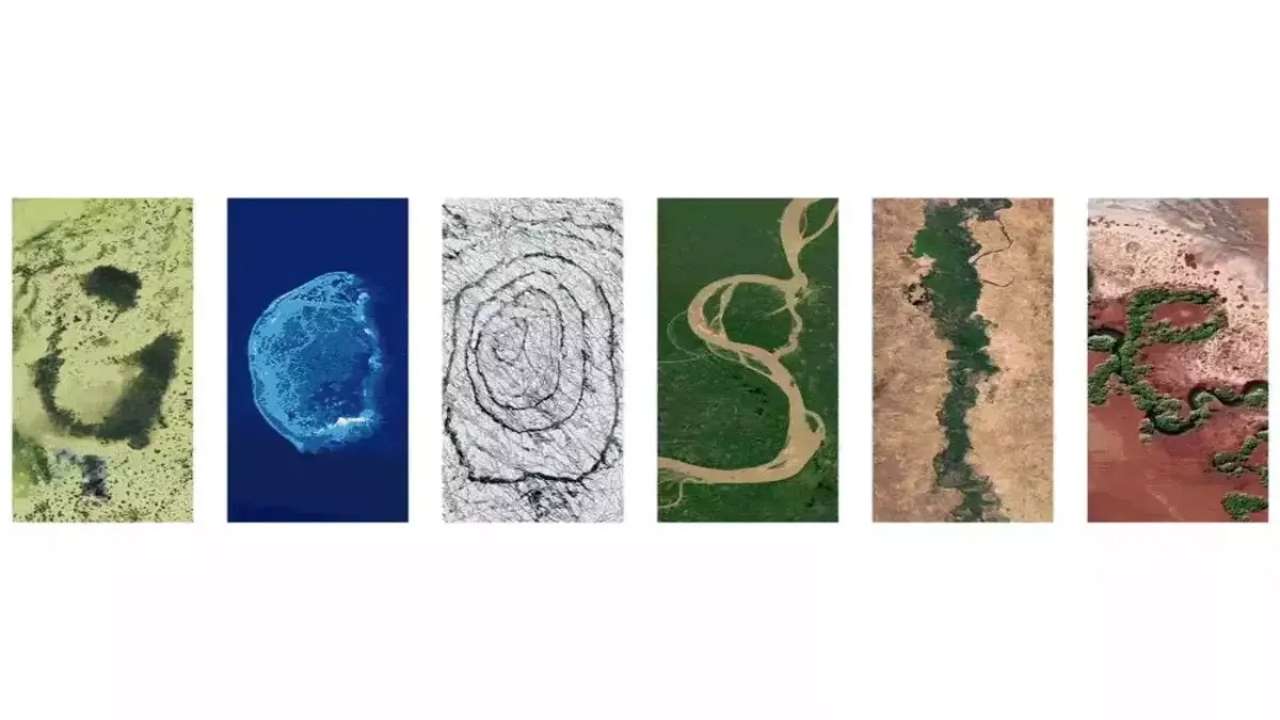
Google shared a doodle today to celebrate World Earth Day 2024, which showcased aerial photos of the planet’s biodiversity and natural beauty. Google reminded us of the importance of protecting planet earth for future generations with the help of this doodle.
The Google letters depict specific locations across the globe where people, communities, and governments work every day to help protect the planet’s natural beauty, biodiversity, and resources, according to the explanation of the annual Earth Day 2024 doodle on their website.
It said, these examples remind us that there’s much more to do to address the climate crisis and biodiversity loss, but also offer the promise of hope and optimism.
The islands of Turks and Caicos are represented by the letter “G.” The islands’ conservation efforts are concentrated on protecting important regions for biodiversity and addressing persistent environmental problems.
The largest reef in the southern Gulf of Mexico and a UNESCO biosphere reserve, Scorpion Reef National Park, is represented by the letter “O” in the Mexican flag.
The letter “O” features Iceland’s Vatnajokull National Park, which was designated as a national park in 2008 following decades of advocacy. The ecology within and surrounding the biggest glacier in Europe is safeguarded by this UNESCO World Heritage Site.
The letter “G” has the Jau National Park in Brazil on it. It is a UNESCO World Heritage Site and one of the biggest forest reserves in South America.
The Great Green Wall of Nigeria is represented by the letter “L,” and the Pilbara Islands Nature Reserves of Australia are represented by the letter “E.”
Meanwhile, Earth Day is a worldwide event that promotes protection of the environment every year. April 22 serves as a reminder of the importance of conservation efforts and sustainable practices to guarantee a healthier world and a brighter future.
The occasion inspires people across the world to come together and take action to protect the environment, strengthening our bonds with nature and promoting good change.
Latest world news
Bigg Boss 14 contestant Rahul Vaidya struggles walking in knee deep water, compares Dubai rains with Mumbai floods
Singer and TV personality Rahul Vaidya was recently stranded in the Dubai rains.
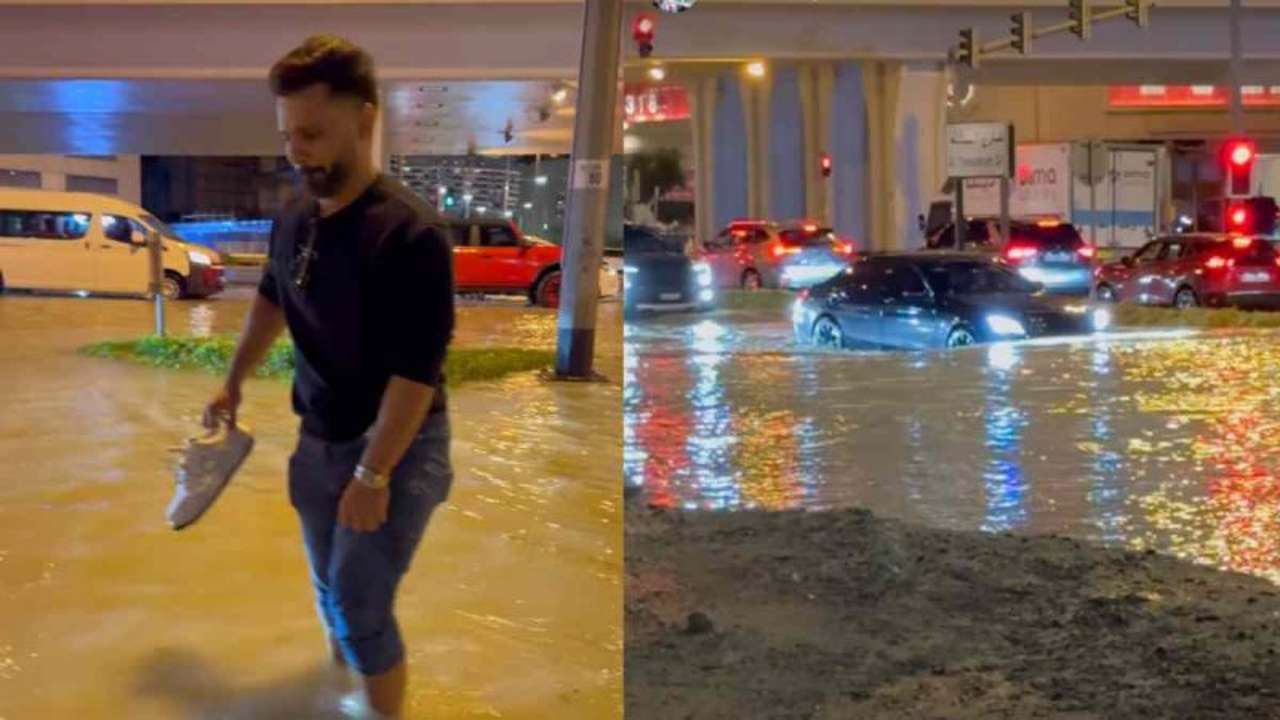
Rahul Vaidya, who was in Dubai ahead of his show which was scheduled to take place today, left the country due to heavy rains and reached Kolkata. The artist shared on social media his encounters in the UAE city, including challenges like walking through knee-deep water. Rahul provided an update regarding the heavy rainfall in Dubai on his Instagram profile.
The Bigg Boss 14 contestant revealed that he was in Kolkata and prepared to do an evening performance. Recalling the terrifying period he went through, Vaidya said there was a lot of confusion and panic in Dubai. The situation was similar to that when heavy floods hit Mumbai in 2005.
Vaiday also posted seval other images and videos of cars that were underwater and flooded roadways. The Bigg Boss 14 contestant, who shared his ordeal, claimed that even though it had just rained for two hours, the situation was dire.
In one of the video, which went viral he can be seen struggling in walking in knee-deep water. He can be also seen holding his sneakers in one hand and with other hand he was seen managing other things.
This is the result of the two hours of rain that it had, he can be heard saying in the video. Vidya also said he dosen’t believe Dubai is accustomed to a lot of rain. Everything had stopped working, he remarked.
After taking part in the first season of the singing reality show Indian Idol, Rahul Vaidya gained widespread recognition. In addition to Bigg Boss, he took part in Khatron Ke Khiladi 11.
Meanwhile, heavy rains that triggered flooding in the UAE and Bahrain, which left 18 people dead in Oman on Sunday and Monday, have paralyzed the financial hub of the Middle East, Dubai.
A lot of incoming flights were diverted from Dubai’s international airport because of the rain. At 7:26 p.m., the busiest airport in the world for foreign visitors stopped accepting new arrivals; a gradual resumption was announced for more than two hours later.
Images of planes navigating flooded tarmacs are making the rounds on social media.
According to pictures shared on social media, the flagship malls Dubai Mall and Mall of the Emirates both experienced heavy floods, while at least one Dubai Metro station had water up to the ankles.
There were several road collapses, severe flooding in residential areas, and numerous reports of leaks from windows, doors, and roofs.
Due to the unfavourable weather, schools around the United Arab Emirates were forced to close, and as more storms are predicted, the closures are anticipated to last until Wednesday. The government of Dubai allowed its staff to work remotely till this Wednesday.
Latest world news
Dubai sky turns green during storm in UAE, video goes viral
The UAE witnessed record-breaking rainfall on Tuesday and the National Centre of Meteorology recorded 254 mm of rainfall in less than 24 hrs in the Khatm Al Shakla area in Al Ain.
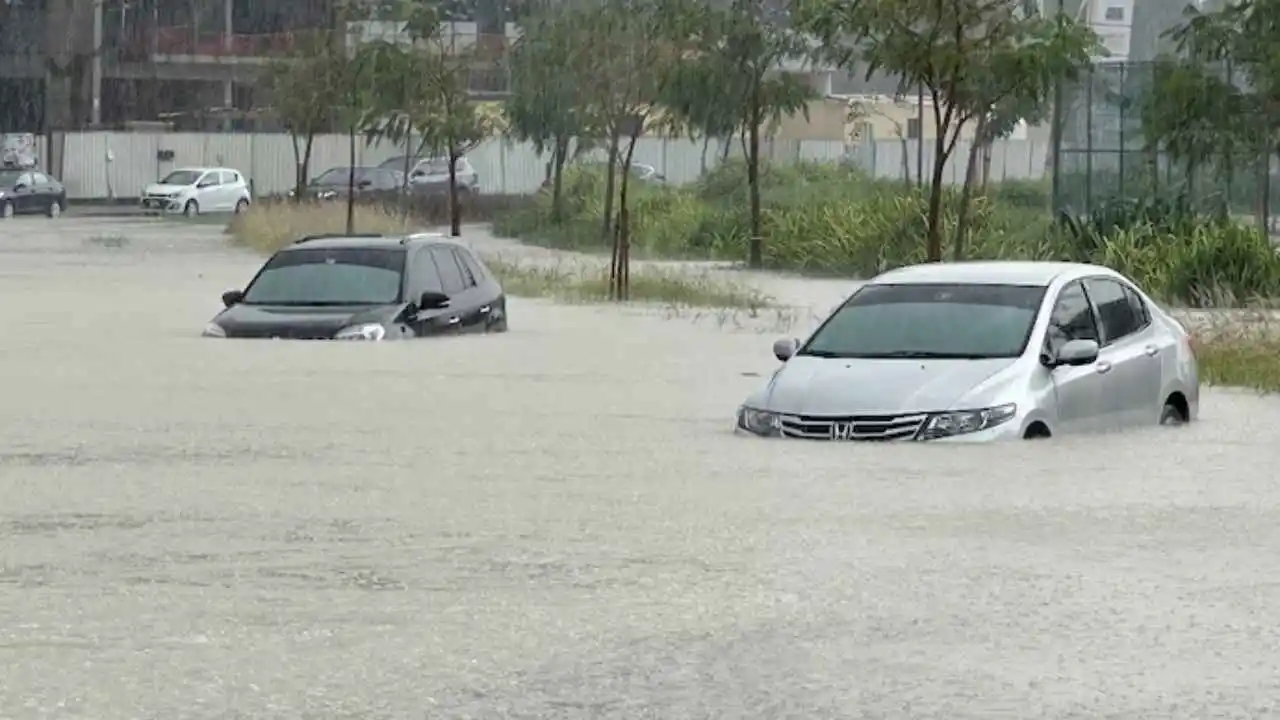
1 person was killed in UAE as it witnessed heavy rainfall on Tuesday, stranding commuters, flooding roads, disrupting trains and flights and resulting in water leakage from mall ceilings. The UAE witnessed record-breaking rainfall on Tuesday and the National Centre of Meteorology recorded 254 mm of rainfall in less than 24 hrs in the Khatm Al Shakla area in Al Ain. It is being said that the rainfall was the highest documented since the start of data collection in 1949.
The heavy rainfall in UAE came days after a similar situation in neighbouring Oman, where 13 people were killed in flash floods. Many parts of Oman saw torrential rains, which caused students to be trapped in buses and swept away motorists and trapped people in their homes.
Videos from Dubai circulating on social media showed widespread waterlogging on roads in Abu Dhabi, Dubai and other important cities. This left daily commuters in cars and other vehicles struggling to get back home. Dubai metro station too was seen flooded and closed.
One such video circulating on social media shows the aerial view of the city of Dubai from the top of a building. In the video the stormy winds are seen blowing over the city of Dubai. As the storm intensifies the Dubai sky turns green and ultimately gets covered by heavy rainfall. The video has gone viral on social media with more than 1.1 million views.
Another video showed water leakage from the ceilings of shopping malls, flooding the floors and destroying goods. A video which was shot in the famous Mall of the Emirates, showed pieces of ceiling falling as the rainwater gushed inside. Videos from many outlets of the Deira City Centre mall chain showed escalators being rendered unusable. Majid Al Futtaim, the company which owns the Mall of Emirates, said that the shopping complexes have been kept open and the customers are being sent away from the flooded areas.
-

 Cricket news12 hours ago
Cricket news12 hours agoIPL 2024: Jonny Bairstow, Rilee Rossouw guide Punjab Kings to 7-wicket victory over Chennai Super Kings
-
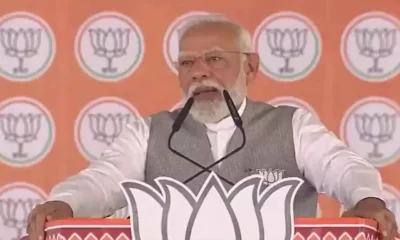
 2024 Lok Sabha Elections10 hours ago
2024 Lok Sabha Elections10 hours agoPM Modi takes a dig at Rahul Gandhi, says Pakistan wants him as Prime Minister
-

 2024 Lok Sabha Elections6 hours ago
2024 Lok Sabha Elections6 hours agoRahul Gandhi criticises BJP, PM Modi for JD(S) alliance, seeking votes for a mass rapist
-

 India News8 hours ago
India News8 hours agoSIT issues lookout notice for Prajwal Revanna in sex video case
-

 2024 Lok Sabha Elections5 hours ago
2024 Lok Sabha Elections5 hours agoBrij Bhushan Sharan Singh’s son Karan gets BJP Lok Sabha ticket from Kaiserganj
-

 Entertainment4 hours ago
Entertainment4 hours agoPanchayat Season 3 to premiere on Amazon Prime video on May 28, 2024
-

 Cricket news11 hours ago
Cricket news11 hours agoBollywood star Amitabh Bachchan motivates Indian cricket team for ICC Men’s T20 World Cup 2024, video goes viral



